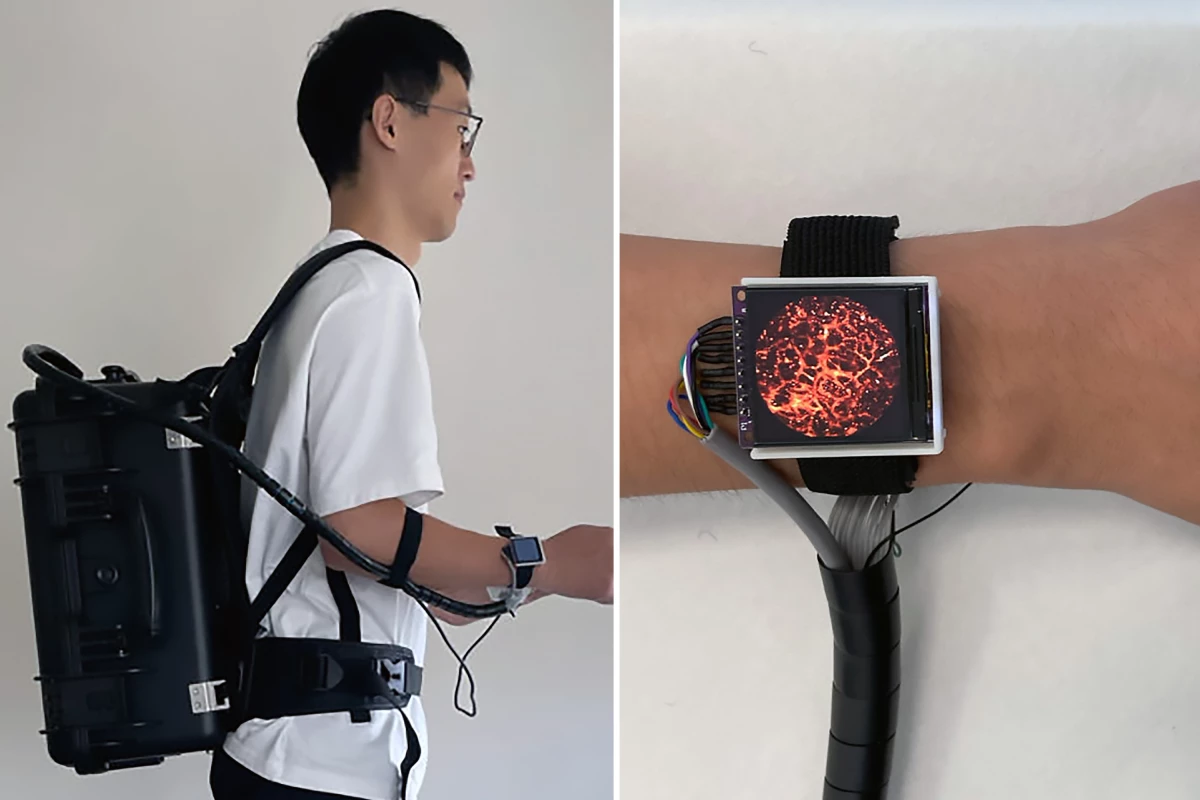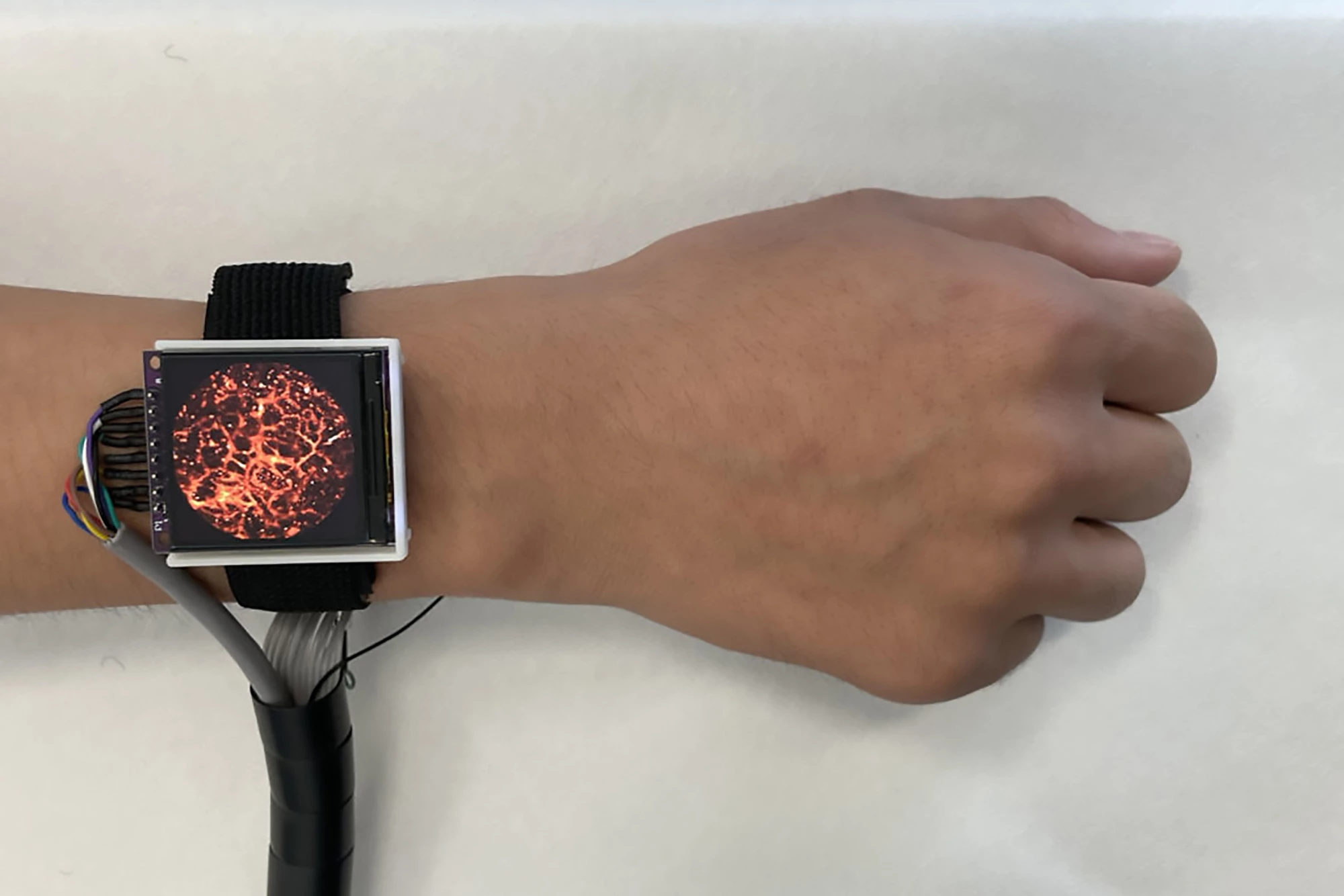Photoacoustic imaging systems provide a high-resolution glimpse into the body, but they’re bulky. Now, researchers have developed a miniaturized version that fits into a watch, with hardware contained in a backpack that’s the same weight as the average five-month-old baby. The device is a non-invasive way of measuring how well the heart is working.
Simply put, photoacoustic imaging works like this. First, an object absorbs light, in this case laser pulses. The absorbed optical energy is converted into heat, generating a temperature rise. Then, thermoelastic expansion results in the emission of detectable sound waves. The difference between ultrasound and photoacoustic imaging is that the former identifies anatomy, whereas the latter enables higher-resolution functional and structural images.
Because photoacoustic imaging can penetrate tissues to a depth of 2-3 cm (0.8-1.2 in), it’s been used to scan blood vessels and estimate blood oxygenation levels (oxygen saturation), as well as diagnose skin conditions and cancer. Researchers from the Southern University of Science and Technology (SUSTech) in China, have developed a photoacoustic imagining device small enough to fit inside a watch.
“Although photoacoustic imaging is extremely sensitive to variation in hemodynamics, difficulties in miniaturizing and optimizing the imaging interface have limited the development of wearable photoacoustic devices,” said Lei Xi, the corresponding author of the study outlining the researchers’ new system. “To the best of our knowledge, this is the first photoacoustic wearable device that is suitable for healthcare applications.”

Hemodynamics is the dynamics of blood flow. Recording hemodynamic parameters like heart rate, blood pressure, and oxygen saturation provides a measure of how well the heart is working.
The researchers’ device consists of a watch with an imaging interface, a handheld computer and a backpack that houses the laser and power supply (the backpack’s weight is 7 kg/15 lb). It’s designed to allow the wearer to freely move around. The device’s adaptable laser focus means it’s able to image multilayered structures like skin and its resolution of 8.7 µm is sufficient to image most tiny blood vessels in the skin inside a maximum field of view of around 3 mm in diameter.
Volunteers wore the photoacoustic device to test it under different conditions, such as while walking or when a cuff temporarily blocked blood flow to the arm. The tests demonstrated that the system was usable, compact, and stable enough to allow free movement.

“Miniaturized wearable imaging systems like the one we developed could potentially be used by community health centers for preliminary disease diagnosis or for long-term monitoring of parameters related to blood circulation within a hospital setting, offering valuable insights to inform treatments for various disease,” Xi said. “With further development this type of system could also be useful for the early detection of skin conditions such as psoriasis and melanoma, or for analyzing burns.”
The researchers are working to create a system with an even smaller laser source and a higher pulse repetition rate, which would make the system more compact and lighter while improving safety and resolution. Eventually, that includes ditching the backpack.
“Given the rapid development of modern laser diode technology and electronic information technology, it should be entirely feasible to develop a more advanced and intelligent photoacoustic watch that doesn’t require a backpack,” said Xi.
They’re also looking to improve their device so it can withstand more strenuous physical activities like running and jumping. And incorporating more hemodynamic parameters, including a qualitative assessment of blood vessel number and volume, which would support the system’s use in the early diagnosis of cancer and cardiovascular disease.
The study was published in the journal Optics Letters.
Source: Optica







